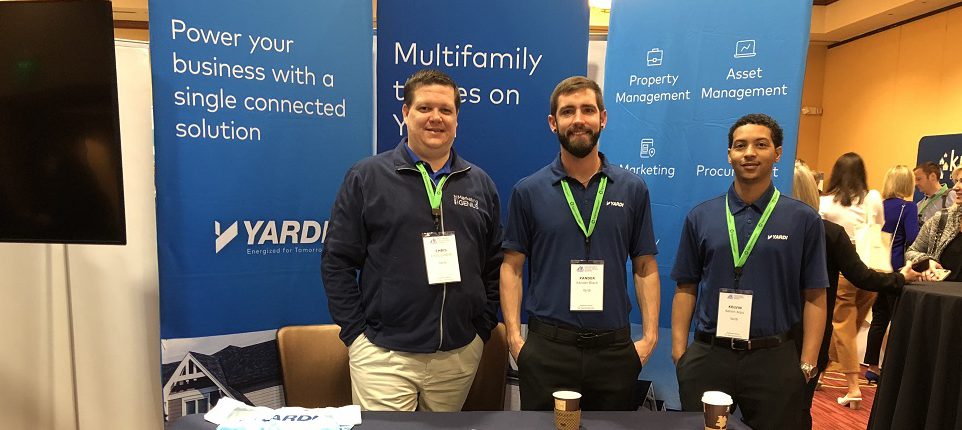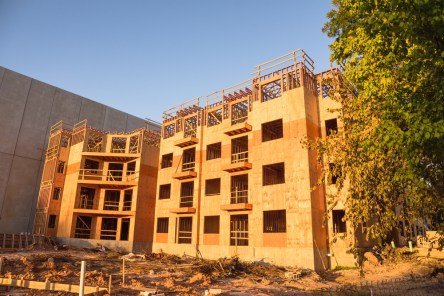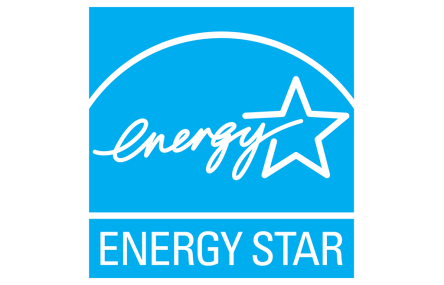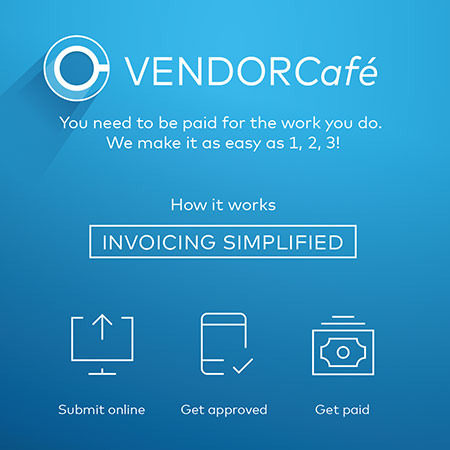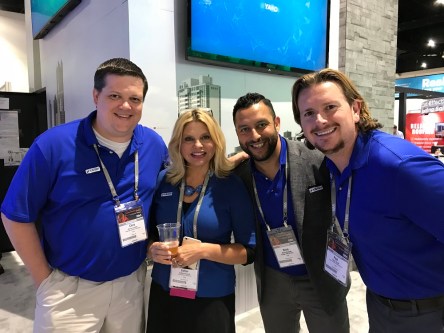Resident retention plays a major role in easy lease renewals and favorable reviews. Maintaining existing leases also cuts costs: no turning units, new marketing campaigns or strategies to covert new prospects. Doesn’t that sound awesome? The following seven strategies for resident retention can help you make the most of existing relationships. Begin at move-in. A positive move-in experience is a key factor in renter retention. Welcome packages are an easy way to help residents feel at home. Depending on your brand, you may choose to spoil your residents with wine, decadent treats, and certificates to fine local restaurants. Perhaps you go for thoughtful and practical like light bulbs, toilet paper, and instant coffee. Either way, the gestures leave a positive impression with residents. Be proactive! A survey by J Turner research reveals that maintenance issues top residents’ lists of complaints. Staying on top of maintenance requests promotes resident satisfaction. Preventative measures, such as regular spring cleaning and winter maintenance, also keep dissatisfaction at a minimum. Respond quickly and professionally to negative feedback. Negative reviews and feedback are inevitable. Your staff must respond quickly and professionally to resident feedback to keep bad situations from getting worst. With the right perspective, even negative feedback can be transformed into an opportunity to shine! Encourage resident engagement with the property and staff. Create opportunities for residents to have positive interactions with staff members and the property itself. Is your property’s demonstration kitchen collecting dust? Is your community garden suffocating under weeds? Highlight the site’s marketable features through events and activities. Remind residents why they moved in! Don’t forget to leverage staff creativity. Encourage your social media person to offer smartphone photography classes. Got a craft beer snob working in your office? Let them coordinate a bar hop for...
Get More Signed Leases...
6 Tips for Success
Leases are the backbone of your business. Getting them quickly signed leads to fewer vacancies, more revenue, and happier stakeholders. But to get there, you must convert your prospects. These six tips will help you get the signatures that you need with less waiting. Close the deal in prospects’ minds. Getting a lease signed begins as early as the property tour. Whether the tour is virtual or in-person, you can use language that promotes the sell. Verbally help prospects see themselves in the unit: “There are so many options for placing your couch in this spacious living room,” or “Your kids will love the recently renovated playground.” When it is time to sign, prospects already have a clear idea that their lifestyles are a fit in the community. Incentivize signing the lease within 24 hours of the agreement. Verbal interest is great, but it doesn’t pay the bills. To maximize a sense of urgency and minimize vacancy time, create an incentive for signing the lease within 24 hours. Perhaps waive the garage rental fee for a month or provide discounts for local services like pet sitting and dry cleaning. Offer what’s valuable to the prospect in exchange for what’s valuable to you, their commitment. Guide indecisive prospects with facts. Use your property’s desirability to your advantage. Gather data on how quickly units lease in the community, in the neighborhood, and any competitive advantages of renting promptly (like seasonal promotions). If there are other value-add features to your community, don’t hesitate to share them. Follow your property facts with a signing incentive for maximum impact. Make it easy to sign the lease. Make it simple for prospects to become residents. First, streamline the application and renewal process using leads-to-leases enabled property management software. Then ensure...
Social Strategies for 2019
Multifamily Social Media Summit
In early January, Yardi returned as an exhibitor and sponsor of the Multifamily Social Media Summit (MFSMS) in Napa, California. The annual event provided a space for multifamily professionals to learn about the latest trends in social media marketing. Keep reading for conference takeaways and ideas to inform your 2019 marketing strategy. The Loyalty Loop Social media marketing has changed dramatically over the past five years. Each year, there seems to be a new platform, hack or algorithm shift to think about. At times, attracting and keeping your audience’s attention can be daunting. Andrew Davis, best-selling author and marketing guru, kicked off the MFSMS with a keynote focused on the new customer journey. The Loyalty Loop, as Davis describes it, “uses the tenants and prospects you have to attract the tenants you want.” Harnessing the power of intentional content marketing and experiential customer care, Davis challenged attendees to rethink the sales funnel. Want to inspire loyalty in your customer base? “You must pledge to be different,” Davis said. Questions to ask yourself: How does your community or company offer a unique experience? What inspires your tenants to talk about the place they live? Are you providing content that is helpful to your audience? “We don’t rent homes, we sell experiences!” says Davis. Making the renter experience great from the start will foster positive, long-lasting relationships with your customers. Beat the Algorithms Multifamily marketers are competing with cluttered social networks and everchanging algorithms. During the session “Staying Ahead of the Social Algorithm,” Dylan Sellberg, Product Manager at HubSpot, discussed the latest algorithm changes. His top tips to beat the algorithm: On Facebook, create and share highly visual content. Using new mediums, such as 3D photos, 360-degree videos and Facebook Live, are incentivized by Facebook, so being an early adopter is a smart move. Instagram highlights your property’s uniqueness in a highly visual format. Investing in quality photography will benefit your brand. Consider hiring a professional or purchasing equipment to create high-quality photos. Not only do high-quality photos and video perform better, but they also provide a glimpse of the experiences offered at your community. Video is Here to Stay “Video is the fastest growing medium in the digital landscape,” shared Jamie Gorski, Chief Marketing Officer at Bozzuto. According to data, 80% of global internet traffic will be attributed to video by 2020. Gorski, together with Elyse Cosgrove, Founder of Elysees Eye Productions, explored video trends during the session “Video Marketing in 2019: What Should Be Your Focus?” CEO features, customer stories and behind-the-scenes videos were the most engaging videos of last year. As we get into 2019, they recommended embracing new delivery methods. New mediums, like 360-degree videos, augmented reality and virtual reality, can help your brand stand out from the competition. “Use it now and you’ll be ahead of the game,” said Gorski. How will you use social media in your 2019 marketing strategy? Learn how Yardi can take your social media marketing to the next level this...
5 Voyager Features
You should be using
If you’re currently using Yardi Voyager as your property management platform, make sure you’re taking advantage of all the great features designed to make your job easier — and help your organization meet its goals faster. One of Yardi’s own Voyager gurus, Amy Walston, shared some helpful tips about five Voyager features you might not be using, but probably should. To find out what they are and what they can do for you and your business, keep reading. Amenity-based pricing What it is: An amenity is an included, non-optional feature of a unit that increases or decreases its market value above or below the unit type rent. You can view units according to premiums that increase value such as cabinet upgrades or a desirable location. An example of an amenity that decreases a unit’s value is a view of a parking lot. Benefits of using it: Pricing rental units only by number of bedrooms and bathrooms doesn’t always deliver the best results since other factors affect desirability. Attracting the right tenant at the right price is key. This tool allows you to control individual unit pricing based on the features of each unit, and lets you easily change unit pricing by updating amenity values. This tool includes user-based security to allow or restrict updates to amenity values and unit pricing. Leasing specials What it is: Leasing specials are deals or offers that prospects can choose when they apply for units and that residents can select when they renew leases. Specials can be created to occur only once, such as a bonus for renewing a lease early, or they can repeat monthly, such as a rent discount for signing a 14-month lease. Benefits of using it: To improve occupancy by converting more prospects and retaining good residents,...
Voice Tech
Multifamily Options
Voice-controlled online entertainment is flourishing in American homes. Many multifamily firms have expressed interest in smart speakers and similar tech options for their properties. Until a few industry challenges are resolved, however, voice-activated gadget cannot fulfill their potential in multifamily applications. Growing Popularity Consumers love voice-controlled devices. In 2017, about 40 percent of broadband households used voice recognition software. The growth continues. Research and analysis firm Parks Associates estimated that household penetration will reach 47 percent by 2022. Voice-activated artificial intelligence (AI) offers multiple conveniences for users. With a simple command or question, users receive helpful information such as commute updates, weather forecasts, and reminders. Consumers also turn to voice recognition software to manage their other devices. Last year, the average American household had 8.8 devices with unique interfaces. Voice-activated technology bypasses the need to switch between devices by offering one interface for them all. The growing popularity and usefulness of voice-controlled AI are promising. Though the technology appeals to consumers, it may not yet offer full value to property owners. Growing Pains Consumer-friendly AI is capable of more now than ever before. Oddly, flaws with basic functionalities still plague the technology, causing trouble for multifamily applications. Command comprehension is the pitfall most likely to annoy users without causing serious damage. Voice-controlled tech may not respond properly because it does not understand user commands. Virtual assistants fail to accommodate for variables such as user syntax, dialects, and the use of non-English words or names. As a result, user satisfaction with virtual assistants—and the properties that carry them—will vary. Connectivity poses a greater issue. Voice-controlled tech often integrates with other devices. A smart speaker like Alexa, for example, can control the thermostat, lighting, and alarm system for a unit. Unfortunately, interoperability—the ability for one gadget...
Accounting Simplified...
Yardi Voyager Residential
Yardi Voyager Residential consolidates property management and financial accounting into a single platform. The fully-integrated suite of multifamily and marketing products makes it easier to manage the entire real estate cycle. Is Voyager Residential Right for My Organization? That depends on several factors. Are you a large organization looking for scalable solutions? Voyager grows and diversifies with you. Users gain access to real-time performance analytics across their entire portfolio, regardless of size. Organizations with smaller portfolios, such as family holdings, may benefit from Yardi Breeze. Do you seek a compliant, accurate and efficient way to manage your portfolio? Voyager financial management features meet all applicable accounting standards and regulatory requirements. Property management features streamline workflows for leasing, move-ins, move-outs, work orders, purchase orders, and everything in between. Would you prefer to leave software management to the tech pros while you run your business? Yardi’s award-winning cloud services manage data storage and updates on your behalf. You can focus on growing your business while Yardi handles the minutia of the software. Does a comprehensive suite of software seem more appealing than a piecemeal combination of products? Yardi Voyager Residential integrates with the Yardi Multifamily and Marketing Suites as well as Yardi Elevate. You benefit from a unified entity for marketing, customer relationship management, procurement, facilities management, energy management, and business intelligence. Do you value flexibility? With Voyager, you aren’t stuck to your desk. Voyager comes mobile-ready and browser agnostic, keeping your team members connected whether they are in the office or in the field. Raising the Bar Yardi is an established company with a proven track record. For more than 30 years, Yardi has supported client success with quality real estate management solutions. Though established, Yardi continues to evolve. Ongoing improvements ensure that client feedback...
Originations Wane
Market Analysis
Editor’s note: Paul Fiorilla is director of research for Yardi Matrix. His analysis of waning loan originations, despite high demand for apartments and industrial real estate, was recently published by Globe Street. You can find the full report summary available for download here. (Select the national category.) Concerns about rising interest rates and weakening economic growth have led to a slowdown in commercial mortgage originations, particularly in out-of-favor asset types, despite the wide availability of debt capital. The Mortgage Bankers Association reported that commercial mortgage originations in 3Q18 fell 7 percent from the same quarter a year ago. The biggest drop came from CMBS, which fell 53 percent year-over-year, and commercial banks, which originated 22 percent less than a year ago, according to the MBA’s survey. Life companies and the GSE multifamily lenders posted slight increases in lending. The decline in lending is more a reflection of demand than supply. No major source of debt capital is pulling back, and the number of debt opportunity funds is on the rise. However, property sales have dipped about 10 percent nationally, while rising interest rates are discouraging some borrowers from refinancing. Since bottoming at just over 2.0 percent in September 2017, the 10-year Treasury has increased steadily and has been over 3.0 percent since mid-September. That has increased loan coupons, although loan spreads have generally come down 40 to 50 basis points over the past year, so the cost of borrowing has not risen as much as interest rates. Tightening loan spreads reflect the healthy appetite among lenders to book loans. Another headwind to originations is the decline in property sales as buyers start to pull back. Sellers are getting fewer bids and – while acquisition yields aren’t yet climbing appreciably – buyers are seeking to...
Pets & Service Animals
Management Tips
Permitting animals on your property can help residents feel comforted, capable, and safe. Managing the quantity and purpose of those animals—pets and working animals–has become a hot topic in property management. These four tips may help to standardize and simplify animal management at your site. Understanding the Laws To best accommodate residents with disabilities and their working animals, achieve a basic understanding of the laws that are in place: The Fair Housing Act (FHA) and Section 504 of the Rehabilitation Act of 1973 (Section 504) require housing providers to make reasonable accommodations for people with disabilities. The Americans with Disabilities Act (ADA) promotes accessibility in public spaces. Together, the three laws promote inclusion and safety for those living with disabilities. Both FHA and Section 504 use the term “assistance animal” to describe working animals that provide aid for humans. The ADA refers to “service animals” with the same purpose. The three laws require that housing providers and the managers of public spaces welcome working animals and their owners. Other details of the laws that are worth noting include: -It doesn’t matter if a resident refers to an “assistance animal” or a “service animal.” FHA and Section 504 apply to all animals that assist or perform tasks for the wellbeing of a resident with disabilities. -The laws do not limit the number of assistance animals or service animals a person may have. It is lawful for a person to have multiple pets, each to address a different therapeutic function. -None of the laws require a specific certification or training for the working animal. Required Documentation Establish a documentation policy that’s fair for all prospects with service animals. Implement the policy for apparent and invisible disabilities. The prospect may be asked to provide documentation regarding their need for a service animal or assistance animal. HUD entitles leasing staff to request documentation from a reputable third party who is familiar with the applicant’s condition. Applying Designations for Pets and Working Animals When documenting the animals within a unit, it may be helpful to differentiate between working animals and pets. Residents with service animals or assistance animals may require different accommodations than traditional pet owners. For example, some communities have a limit on the number of pets within a home. A resident with disabilities reserves the right to have multiple animals that assist in different ways. May this resident also have a pet (non-working animal)? Establish a policy and apply it consistently. Helpful Software Business management software may help organize residents and their animal companions. Yardi client Bridge Property Management has customized the set-up of Orion Business Intelligence to keep track of animals on the premises. Yardi product specialist Colin Roberson explains, “We have been able to track how many dogs are on each property, which units have pets. [Orion BI] is a nice thing that the property managers can have on their phone. If they are walking the property and seeing a pet in a unit, they can very quickly verify to see if we have a pet on record there.” “It’s such a practical application,” Roberson continues. “I don’t know if others use it that way but I would say we use it in different ways to track things like that and improve...
Multifamily Update
From Yardi Matrix
Jeff Adler, vice president of Yardi Matrix, assisted by Jack Kern, director of research and publications, recently delivered a webinar on the state of the multifamily industry. Excerpts follow. Q: How is the U.S. economy overall? A: It’s in good shape. Gross domestic product and employment are steady, wages are rising and the labor market is tight. Inflation is rising but under control. Q: And the multifamily market? A: It’s good too, although there are a few crosswinds. Jobs and population growth are strong but shifting to lower-cost cities, and homeownership is gradually rising. Multifamily capital is abundant, and new supply deliveries are weighing down on several markets, with the level of new supply flattening but not declining. Q: Has multifamily supply leveled out, and why? A: Construction delays and financing are a factor. Construction is just catching up to household formation, and builders are focusing on higher-price single family homes. Q: What are some policy changes addressing affordability? A: There are some proposed and implemented government mandates. Other market-oriented changes include a community in Kissimmee, Fla., that encourages residents to cover some of their rent by sharing their apartment on Airbnb; “rent by bedroom” communities that combine private bedrooms with shared kitchen and living areas. The coworking trend offers a model for coliving. Societal infrastructure, especially education, is the power of local economy, which drives multifamily investment. Q: What job growth trends are affecting multifamily? A: Companies are relocating and expanding in lower-cost markets—places like Phoenix, Orlando, Fla., Houston, Las Vegas and Raleigh, N.C. Tech hubs are emerging both in formerly non-tech metros and traditionally overlooked cities, such as Indianapolis, Pittsburgh and Philadelphia. Q: What are some of the other factors in play? A: The 2017 tax reform that caps the deduction for...
CSR Aids Retention
In the multifamily space
If you haven’t heard of corporate social responsibility, it’s time to start listening. What is it, and why should you care? Corporate social responsibility, CSR for short, is not just another buzz phrase in multifamily housing: it might be the key to employee retention. We met with Jen Piccotti, Chief Operating Officer at ManagInc, the industry leader in resident and employee satisfaction, retention and education to learn more. What is CSR? Jen Piccotti: Corporate social responsibility is a focus on corporate culture to improve retention, reputation, recruitment and performance. But it’s more than just volunteerism and green initiatives. CSR is rooted by three pillars: The Workplace This is a focus on providing the support and resources to employees so they can do their best work—as well as to suppliers. And that part is important because residents don’t always see a distinction between in-house maintenance staff, for instance, and the landscaping crew who’s contracted out. So it’s important to work with suppliers who are paying attention to their culture and their impact, because who you choose to work with is a representation of your brand. The Living Environment Here, we ask ourselves questions about the communities we build and manage. Are we providing everything residents want and need? How is our customer service? What do our policies and procedures look like? The Greater Good This is what most people think of when they think of CSR: it has to do with volunteerism, philanthropy, utilizing resources responsibly, and maintaining a code of ethics. What does CSR have to do with staff retention? JP: More and more prospective employees, especially Millennials who make up the largest segment of the work force, are asking questions. What kind of company is this? How do you run your business? They...
Score Alert
New ENERGY STAR Metrics
The U.S. Environmental Protection Agency’s ENERGY STAR® score gives building owners a snapshot of their property’s energy performance by comparing it to a database of similar buildings. Performance metrics in ENERGY STAR Portfolio Manager®, an online tool for tracking energy and water consumption and greenhouse gas emissions, changed on Aug. 26 to reflect the most recent market data available. This update is part of EPA’s standard process to “keep ENERGY STAR metrics as current as possible, and reflective of current market performance,” the agency says. The revised ENERGY STAR criteria incorporate the most recent Commercial Buildings Energy Consumption Survey (CBECS), which constitutes the baseline against which owners compare their buildings to earn certification. In short, the change is an effort to make sure that the “similar building” comparisons for performance are as accurate as possible. EPA continues, “The most recent market data available shows an overall improvement in the energy performance of the U.S. building stock in recent years. So when Portfolio Manager metrics are updated on August 26, ENERGY STAR scores and other performance metrics will, on average, go down.” The new calculations “will be applied across all time periods, which means scores and metrics for all historical benchmarking data will change. By applying this update across all time periods, you’ll continue to be able to analyze changes that are a result of your own activities, rather than changes in underlying market data.” “The change is significant for buildings pursuing LEED or Green Globes certification, for buildings with GSA or other government space leases tied to an ENERGY STAR score of 75, for buildings in cities with mandatory benchmarking, and for the more than 450,000 commercial properties that have an ENERGY STAR score,” says Baltimore environmental attorney Stuart Kaplow, publisher of a green...
Less Paper, More Savings...
At Walton Communities
At one point, Georgia-based apartment community developer and manager Walton Communities’ mission to provide exceptional residential, affordable and active adult housing at a great value in a friendly neighborhood environment was awash in paperwork. Staff members from 20 Atlanta-area properties had to transport from 25 to 60 invoices each to the corporate office in Marietta every week. “Along with the money spent on paper, gas and car wear-and-tear, this obligation took our staff members away from leasing and resident service,” said Jennifer Price, IT systems trainer for Walton Communities. “As we moved to grow our portfolio by 50%, we knew the process would become even more cumbersome. We quickly realized that we needed a more efficient invoice processing system.” That was Yardi PAYscan Full Service, with which Walton Communities’ vendors send their invoices to a secure, centralized email or physical lockbox monitored by Yardi. The Yardi team scans and enters the account data, and the invoices show in the client’s Yardi Voyager platform as invoice registers, ready for review, approval and processing as payables. All the client’s site teams have to do is review, add details and approve—without driving anywhere. With invoice processing off their hands, Walton Communities’ staff members can focus on their core business of leasing, resident service and property maintenance. Yardi PAYscan Full Service adds even more convenience by automatically attaching purchase orders, a major time-saver for maintenance and procurement teams. Yardi PAYscan Full Service extends the benefits Walton Communities gains from the Yardi Procure to Pay Suite, an end-to-end procurement, vendor management, invoice processing and payments solution. “Leasing and customer service are the core of our business. Yardi PAYscan Full Service lets our staff concentrate on these activities, rather than dealing with invoicing and billing,” Price said. “The process of...
Pay Vendors Faster
See How VendorCafe Works
A vendor provides a product or service for a property management company. Then they get paid, the sooner the better. That’s the theory, at least. In practice the traditional process can be laborious for both sides of the ledger—vendors and property managers. Submitting paper invoices, securing approvals, cutting checks, stuffing and mailing envelopes, and taking payments to the bank breed opportunities for errors and delay. Yardi’s online vendor management solution, VENDORCafé®, speeds up the invoicing process for vendors while reducing printing, mailing and storage costs for property managers. “We’ve noticed a significant improvement in expediting our invoices through the system. It’s user friendly, and provides an easy transition from one task to the next. Thanks VENDORCafé!” says Shamrock Press and Graphics. Yardi has taken the lead in developing new technology for vendors that makes processing invoices and payments, uploading insurance certificates and accessing statements, much easier. VENDORCafé offers: Easy, secure, mobile-enabled uploading of invoices and statements Reduced costs through electronic invoice processing Automated transmission of compliance status, expiration alerts and other information This infographic takes a look at the step-by-step VENDORCafé process. For property managers, VENDORCafé is a single vendor management system of record that cuts risk in vendor onboarding, eliminates lost and duplicate invoices and integrates fully with their Yardi Voyager® property management and accounting platform. “VENDORCafé eliminated the frustration that our vendors and internal staff previously experienced. Before, vendors would reach out to our staff to get updates on invoices. Now that vendors can follow their invoice online through the payment process, we have seen a visible increase in efficiency,” says Iris Esguerra, Yardi project manager and information technology business analyst for Grubb Properties, a developer in Charlotte, N.C. with commercial and residential holdings. She adds, “VENDORCafé gives our vendors confidence and...
ADA in Multifamily
Cost of Non-Compliance
I’ve been a proud Atlanta resident for 24 years. While much of that time was spent in the car-dependent suburbs, recent years have offered the opportunity to explore the bustling city as a pedestrian. It was during a trip to Piedmont Park (the largest park within Atlanta city limits) that I noticed a problem that has plagued city dwellers for decades: precarious pavement. Cracked concrete slabs jut several inches into the air, forced upward by the roots of established trees and erosion. Those raised surfaces were accompanied by deep potholes and portions of missing concrete. It was an unpleasant ride on my mountain bike. I could only imagine what it must be like on foot or in a wheelchair. Others have had similar thoughts. On June 11, three wheelchair users filed a class action lawsuit against the city of Atlanta. The suit asserts that the city’s walkway infrastructure does not uphold the Americans with Disabilities Act (ADA) statutes. The hazardous walkways make navigating pedestrian thoroughfares dangerous. In many areas, pedestrians must enter the street and contend with automobile traffic just to get around. A win seems promising for the wheelchair users. Several major cities have emerged from similar lawsuits by paying billions for repairs. Los Angeles, for example, settled a suit in 2015 for $1.3 billion in repairs over the span of 30 years. Avoid Lawsuits. Be Proactive About ADA Compliance. If major cities are not exempt from ADA noncompliance lawsuits, neither are you. Residents are demanding their rights at multifamily properties, too. In 2012, The Department of Justice announced one of the largest settlements to date: the owner of 32 properties had to pay $10,250,000 into an accessibility fund to correct noncompliance issues. The owners also paid a $250,000 civic penalty. Correcting the...
Rising Concern
Sea Level Impact on Real Estate
Intense climate and weather-related events, such as hurricanes, hail and ice, heat and wind and inland flooding, are occurring around the world with alarming intensity. Three hurricanes in 2017 alone caused a combined $300 billion in damages. About 5 million people in the U.S. are within 4 feet of a local high-tide level. A United Nations report in 2016 noted that climate-related events could place real estate assets valued at $35 trillion at risk by 2070—about half of today’s global assets under management in any industry sector. By one estimate, a sea level rise of six feet would imperil U.S. coastal properties worth about $900 billion. How can real estate asset managers prepare for what could be an inevitable rise in sea levels and other manifestations of climate change? “Asset managers and investors already have access to energy efficiency data from providers like Yardi. Now they need project-level natural hazard data that includes climate change projections. This is something the climate resilience field is working on, with a variety of firm jockeying to be first with the rollout of their proprietary software,” says Joyce Coffee, president of Climate Resilience Consulting and a senior sustainability fellow at Arizona State University’s Global Institute of Sustainability. Some cities, such as Cedar Rapids, Iowa, are countering weather damage risk by building flood control systems. Other metros, like Philadelphia, Detroit and Washington, D.C., have increased sewage fees, spurring building owners to consider adopting more stringent water conservation efforts. Many other officials and private citizens, of course, focus their efforts on identifying and mitigating sources of climate change. Real estate investors, for their part, are incorporating climate risk into their analysis and avoiding risky investments. A whitepaper released by BlackRock in 2016 noted, “Investors can no longer ignore climate change....
No Smoking Units
See How NALS Did It
Transitioning one property to a nonsmoking policy can be a challenge. But 49 properties? That’s no small feat. NALS Apartment Homes recently undertook this task, using the communication tools in RentCafe to help smooth the process. Keep reading to learn more about NALS’ decision to roll out a nonsmoking policy, the three-phase approached it used and the effect the shift has had on marketing, leasing and retention. Why Transition to a Nonsmoking Portfolio NALS began exploring options to reduce and/or eliminate smoking across its portfolio in 2015. After polling residents and staff, researching local laws and engaging with local chapters of the American Lung Association, it was determined that most properties would adopt a nonsmoking policy. According to the NALS 2017 Annual Report, “While the negative health effects of smoking influenced our decision, we were also motivated to mitigate the increased costs of cleaning a smoking apartment, the increased risk of fire caused by smokers and the disturbance that smoking causes to nonsmoking resident and employees.” Policy Change in Three Parts NALS approached the transition to nonsmoking gradually, to allow time for clear communication and minimize the impact on residents. “RentCafe was a huge help in making our nonsmoking policy a success,” shared Kayla Campbell, marketing leader at NALS. “We used RENTCafé to send out the initial surveys, and then to streamline what was communicated about the policy in our marketing, online applications and email correspondence. We also used the calendar and announcement functions in the resident portals to ensure the transition date was top-of-mind.” Phase 1 (2015): Surveys NALS sent out surveys to gauge interest at the properties, determine primary resident questions/concerns to address and to see which specific buildings were already effectively nonsmoking. Phase 2 (2016): Notice of Intentions A notice of...
Making Paper Vanish
With Yardi PAYscan
Accounts payable and accounts receivable are traditional hotbeds of activity for property managers, especially for large organizations with many properties and units under management. Boyd Management Inc. (BMI), has streamlined AR and AP by replacing thousands of paper invoices and check payments each month with electronic files that can be processed by staff with the convenience and efficiency of mobile devices. BMI began as a property developer and construction company in the late 1970s. The company built its first property in South Carolina financed under the United States Department of Agriculture’s Rural Development (RD) program. BMI still operates that property today, 40 years later. “We developed a lot of properties in the 1970’s, 80’s and 90’s. As tax incentive housing programs reformed during that period, we got a lot of calls from other RD property owners to buy them out. We grew significantly and are now the largest owners of USDA-financed properties in the country,” says Babbie Jaco, vice president and partner at BMI. Today, BMI oversees more than 350 residential properties in North Carolina, South Carolina, Georgia, Florida and Alabama. The regional portfolio adds to the challenge of a centralized accounting team that serves multiple properties, many in rural areas. Subsidies under management include everything from USDA and HUD 50059 to Low Income Housing Tax Credits. Through its affiliate, WWJ, LLC, BMI has also rehabilitated large portfolios of properties with creative financing and partnerships. “In 2008, we teamed up with Greystone Affordable Initiatives, CAHCEC, multiple state Housing Finance Agencies and other groups. Collectively, we developed our trademark housing preservation program, and the results have been phenomenal,” says Jaco. Through tax-exempt bonds and various affordable housing financing tools, the cooperative has preserved and renovated more than 6,000 units, with more than $170 million in...
Electronic Payments
5 Reasons You Need Them Now
It’s 2020 and there are still plenty of multifamily properties that are missing out on the benefits of electronic payments. If you’re still not sure if electronic payment processing is worth it, below are five great reasons to make the switch. Show prospects that you are not a dinosaur. Today’s renters expect electronic payments. A study by the NMHC/Kingsley reports that 92 percent of respondents consider online rent payment an important resident portal feature. If you’re operating under an outdated paper system, you’re making your neighboring competitors more appealing. Vendors will dig your modern ways, too. Vendors want to know that they will receive prompt payments for their services. Electronic payments eliminate the “check is in the mail” delay which can improve your relationship and promote faster service in the future. Make it easier for residents to give you their money. Electronic payments offer convenience, versatility and instant confirmation. That’s why 78% of renters prefer to pay electronically! You can also eliminate lost check disputes. All electronic payment transaction can be easily tracked. Automatic record keeping benefits you and your residents. Receive more payments on time. When residents can pay by ACH, debit or credit card, text, and WIPS they are more likely to pay on time. (Who wants to pay late fees?) Yardi client Roscoe Properties’ Mariana Estrada, Vice President, Operations explains, “We collected 95 percent of payments due — on time and electronically — thanks to Yardi Payment Processing. In the first week of the month we collected $9 million across our portfolio. That’s money in the bank without staff intervention.” Make bookkeeping easier. Automated payments save time and improve accuracy. Each transaction is organized and automatically entered into Yardi Voyager. There are no bank runs or batches to mail to corporate....
Energy Engagement
AT NAA Apartmentalize
A recent National Apartment Association study about apartment residents’ familiarity with and attitudes toward energy efficiency was the focus of an energy management panel at the recent Apartmentalize Powered by NAA conference in San Diego. The “Get Residents and Keep Them with Energy Efficiency Engagement” panel featured Martin Levkus, regional director for the Yardi Smart Energy Suite; Lexie Goldberg, senior associate for sustainability at Greystar; and Mary Nitschke, director of ancillary services for Prometheus Real Estate Group. Jenifer Paneral, senior vice president of operations at DayRise Residential LLC, served as the moderator. Last fall, NAA commissioned the Shelton Group to conduct a survey of 1,000 renters to understand the role of energy efficiency in choosing and staying in an apartment. The results were shared in Units magazine in June 2018 and presented to session attendees at Apartmentalize. The study revealed that property managers and owners can maximize resident engagement with energy efficiency. The study also found that mentioning energy efficiency at the first touchpoint is an opportunity to “get residents.” Twenty-five percent of residents participating in the survey said that knowing an apartment’s energy efficiency impacts their rental decision. According to Levkus, property managers can promote sustainability by making it convenient—and the key to convenience is technology. “Providing a portal that allows residents to easily view their consumption and pay their bills online empowers them to make changes that save money and make the property more sustainable,” he said. “Renters also like smart devices such as thermostats that increase their comfort but also reduce consumption and save money. The thermostats power down heaters and air conditioners when the unit is unoccupied.” Goldberg spoke of the importance of making energy and sustainability prominent on a property website. She described a Greystar community’s home page that...
Smart Future
Multifamily AI Panel
What is artificial intelligence (AI)? According to Wikipedia, it is “The artificially created ability of a digital computer or computer-controlled robot to perform tasks commonly associated with intelligent beings.” While this definition of AI sounds like something from a sci-fi movie script, it actually describes technology currently poised to transform multifamily real estate management. Yardi’s Dharmendra Sawh, industry principal of Yardi Elevate, led a panel of experts at NAA Apartmentalize on June 14 in San Diego for “The Age of AI: Business Intelligence Today and Tomorrow.” Apartmentalize is NAA’s annual educational conference and is the premier resource for educating rental housing industry professionals. Along with Michael Barry, vice president of data analytics at Bozzuto Management Company, Tim Reardon, chief operating officer of Bridge Property Management and Dawn Wise, national financial analyst at Berkshire Communities, Sawh discussed best practices for business intelligence (BI) today and the looming impact of AI on multifamily business technologies. “BI tools deliver analytics to provide foresight, improve business decisions and increase your competitive edge. But soon, your software could be making those decisions for you. Tracking the right measures can help future-proof your analytics in anticipation of AI,” said Sawh. The presentation covered which performance measures are most important, how technology can track that data and how to analyze and act on that information to create a successful business strategy. The session wrapped with a preview of what’s coming for multifamily owners and managers with advancements in AI. Beyond BI The panel discussed predictive and prescriptive analytics for real estate management, and the role machines will play as interpreters of data. Machine learning is a component of AI that uses historical information and correlates multiple data points to make predictions about the future — and as a result, becomes more...
Risky Business
Are Your Properties Protected?
A recent Yardi Matrix research bulletin titled “Flood and Fire: The Multifamily Sector’s Response to Natural Disasters,” assesses the state of U.S. multifamily markets in areas hit hard by natural disasters in 2017 including hurricanes and wildfires. Hurricanes alone caused around $110 billion in total reported property damage. The bulletin also covers the impact of these events on the insurance market, and advises that property owners in the private insurance market should be ready for increasing rates and deductibles along with tightening policy terms and conditions. It’s Hurricane Season Again As cited in an April 2018 Multifamily Executive article, the U.S. was hit with 16 severe weather events in 2017. And now that this year’s hurricane season is underway, property owners and managers should ensure that their communities are as safe and sound as possible to prevent against future losses should a major storm hit. One key tip: install critical infrastructure above flood-prone areas. Recommended actions outlined in the article include relocating electrical panels, mechanical equipment, meters and shut-offs to higher ground. Sealing cracks in walls and foundations and installing sump pumps will go a long way to shoring up a property. Using materials that are designed to survive water exposure and resist mold for framing, wallboards, floorboards and ceilings is also a great plan. Mitigating Property Risk When it comes to safeguarding properties, being ready for extreme weather isn’t the only consideration for property owners. To protect against resident-caused damages, a required renters insurance program is a widely accepted industry best practice. For property owners without renters insurance at their communities, now is a great time to consider implementing a program to mitigate risk. A program that includes fast and easy signups for residents and automated compliance monitoring for property managers is ideal....
Demand Information
Matrix Multifamily Report
A new report by Yardi Matrix indicates that multifamily deliveries might outpace demand in some key U.S. housing markets. Matrix conducted a study to determine which areas might be at risk of oversupply or undersupply over the next five years. The research revealed that deliveries in 2016 and 2017 helped compensate for the construction shortage in the wake of the Great Recession. “Most of the metros that are at short-term risk of oversupply have strong economies and healthy multifamily demand, so units coming online should be absorbed by growing populations,” the report concludes. Markets and submarkets with outsize development activity, however, “can expect volatility” that will give rise to higher vacancy rates and stagnant rent growth. Achieving market equilibrium going forward will require developers to “intelligently calibrate the amount and location of new projects” to accommodate finite demand. Yardi Matrix identified Denver, Seattle, Dallas, Phoenix, Miami and Charlotte, N.C., as key markets at risk of oversupply over the next five years. Demand is projected to exceed supply of apartments for rent in San Diego, Los Angeles, California’s Inland Empire, Houston, New York and Sacramento, Calif. Read “U.S. Multifamily Supply and Demand Forecasts by Metro” to learn more about homeownership, population shifts, social trends and other factors affecting the multifamily...
NAA 2018
Lessons from Apartmentalize
The multifamily industry converged in San Diego last week for Apartmentalize Powered by National Apartment Association. Formerly known as the NAA Education Conference and Exposition, the annual event is the largest educational conference for apartment industry professionals. We highlight five of our favorite lessons from this year’s event. 5 Lessons from Apartmentalize 2018: Own the Age of AI On Thursday, industry experts discussed the impact of artificial intelligence in multifamily. Panelists included Dawn Wise from Berkshire Communities, Michael Barry from Bozzuto, Tim Reardon from Bridge Property Management, and Yardi’s Dhar Sawh. Artificial intelligence has just recently emerged in the rental housing industry. “This is so new for our industry, so the sky’s the limit,” explained Reardon. The session explored the benefits of artificial intelligence, big data, and business intelligence tools. How can you get energized for the Age of AI? Top tips from panelists: learn more about AI, and make a data strategy plan. Today’s Renters Have a Multi-Touch Journey Over the last two decades, we’ve gone from tracking walk-ins and phone calls to embracing comprehensive CRM systems. On a panel moderated by Yardi’s Esther Bonardi, Holli Beckman from WC Smith, Israel Carunungan from Greystar, and Mia Wentworth from CWS Apartment Homes discussed multi-touch lead attribution, a model for tracking and weighing touchpoints in the lead-to-lease cycle. How can smart marketers improve lead tracking? “Dig into it, study it, and it can open a whole new world,” advised Bonardi. Learn more about multi-touch lead attribution and download our free eBook. Sustainability Wins At Friday’s Apartmentalize session, panelists including Yardi’s Martin Levkus explored resident engagement through energy efficiency. In a recent National Apartment Association survey, windows were the top sustainability item residents cared about. For one panelist, energy efficient windows resulted in a $75 per month...
Handling Hoarders
Property Best Practices
Spring is a time for cleaning house and fresh beginnings! Unfortunately, spring cleaning isn’t intuitive or easy for some residents. Your intervention may be needed to keep residents and your property safe. Hoarding disorder is the excessive collection of possessions. It is closely linked with obsessive compulsive disorder, a mental illness that affects nearly 3 million people nationwide. As a mental illness, residents that hoard are protected under the Fair Housing Amendments Act and the Disabilities Act. They must be cared for accordingly. When It’s More than Just a Mess When do you need to get involved? Some residents have different standards of tidiness, or they are avid collectors of certain items. Not all collectors are hoarders. A few key risks identify hoarding behavior: A living environment that is dangerous to the hoarder, neighboring tenants, and the property Blocked access to emergency exits, hallways, and windows Blocked pathways to ventilation that may result in mold, mildew, and poor air quality for the inhabitants of the unit as well as neighboring units Improperly stored food items that attract and harbor pests If a resident displays one or more of the aforementioned risky behaviors, an intervention may be necessary. Staff Training To address hoarding properly, early detection is key. Regularly scheduled inspections for health code compliance, fire safety compliance, and smoke detector maintenance provide staff with reasonable access to units. When risky behaviors are identified, promptly get assistance. On-site staff members do not have to be experts in the illness to help renters in need. More than 100 task forces are available to assist you through the International OCD Foundation. Such organizations can help property managers assist residents with hoarding issues—without compromising health and safety for other residents. Avoiding Catastrophe Hoarding disorder is a mental illness...
Multifamily Update
From Yardi Matrix
What’s the verdict on the U.S. multifamily market—healthy, ailing or somewhere in between? Data presented in a recent webinar led by Yardi Matrix indicates that the news is mostly good. “Despite a fair number of headwinds that include decelerating rent gains, growing supply, the advanced age of the economic cycle and the increase in interest rates, the multifamily market remains in a healthy state,” says a presentation delivered by Jeff Adler and Jack Kern, vice president and director of institutional research, respectively, for Yardi Matrix. Positive signs for the U.S. multifamily market include: The economy, which grew by 2.3% in 2017 and the first quarter of 2018, added more than 200,000 jobs so far in 2018 and spurred a high level of consumer confidence; Plateauing rental unit deliveries combined with steady economics that will increase rents by an estimated 2.9% in 2018; Rising wages and a tight job market that “pulls people off the sidelines”; Moderate inflation Potential crosswinds include: Demand—meaning jobs and population—which, while strong, is shifting to lower-cost cities, driving a gradual rise in homeownership; Increasing financing costs; Abundant multifamily capital, holding cap rates steady and compressing spreads; New supply deliveries that are still being absorbed in many markets. There’s lots more insight in the full webinar. The recording, presentation and accompanying report are available...



